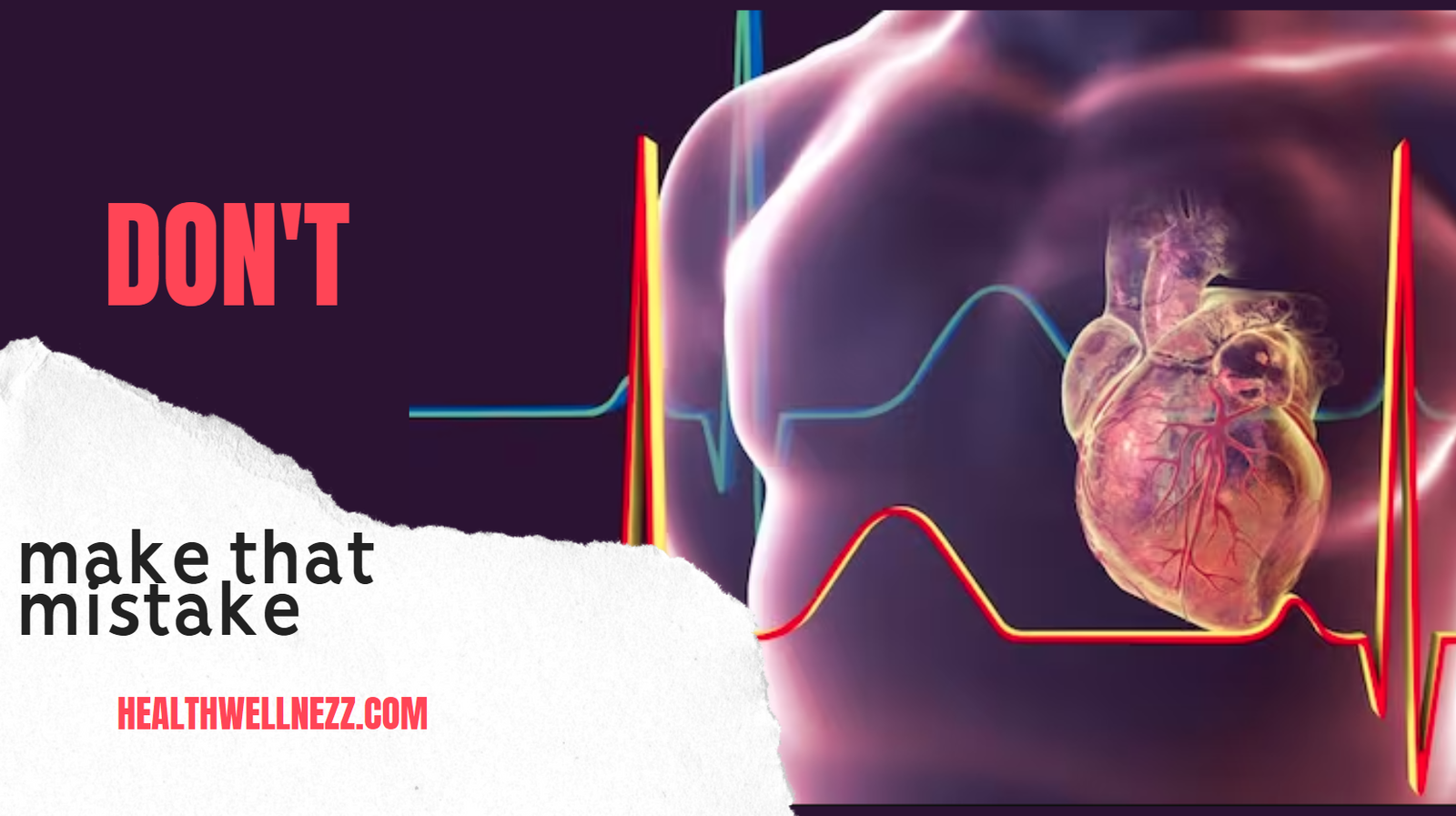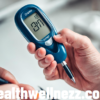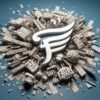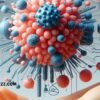Heart attacks, also known as myocardial infarctions, are life-threatening medical emergencies that strike fear into the hearts of millions of people around the world. This debilitating condition affects individuals of all ages and backgrounds, causing severe pain, lasting damage, and even death. However, the good news is that understanding the causes, recognizing the symptoms, and taking preventative measures can significantly reduce the risk of heart attacks. In this comprehensive guide, we’ll delve deep into the world of heart attacks, exploring the science behind them, their risk factors, symptoms, treatment, and most importantly, how to prevent them.
The Heart – The Engine of Life
The heart, a remarkable organ, is the engine that powers our bodies. It’s a muscular organ responsible for pumping oxygenated blood throughout our circulatory system, delivering nutrients and removing waste products. Understanding its structure and function is the foundation for comprehending how heart attacks occur.
The heart is divided into four chambers: two atria and two ventricles. The right atrium receives deoxygenated blood returning from the body, while the left atrium receives oxygenated blood from the lungs. The atria contract and push blood into the ventricles, which, in turn, pump it out to the body and lungs. This synchronized and rhythmic pumping action ensures that every cell in our body receives the oxygen and nutrients it needs to function correctly.
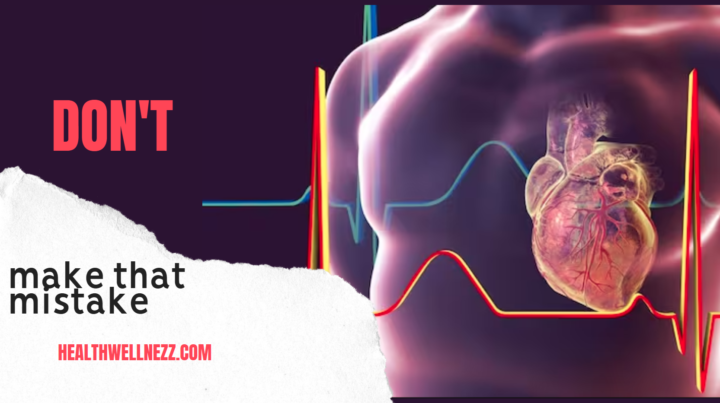
The Science of Heart Attacks
- While the heart’s function is vital, it’s equally important to understand what can go wrong. The science behind heart attacks involves a process known as atherosclerosis. Atherosclerosis is the buildup of fatty deposits, cholesterol, and other substances in the walls of the coronary arteries, the blood vessels that supply the heart muscle with oxygen and nutrients.
- As these deposits accumulate, they form plaque, which narrows the arteries and restricts blood flow. This narrowing can lead to angina (chest pain) and, if a plaque ruptures and forms a blood clot, a complete blockage can occur, causing a heart attack.
Who Is at Risk?
- Heart attacks can affect anyone, but certain factors can increase your risk. These risk factors can be broadly categorized into modifiable and non-modifiable factors.
Non-modifiable factors include:
- Age: The risk of heart disease increases with age.
- Gender: Men are generally at a higher risk than women, although the risk for women increases after menopause.
- Family History: If you have a family history of heart disease, your risk is higher.
Modifiable factors include:
- High Blood Pressure: Also known as hypertension, it’s a significant risk factor for heart disease.
- High Cholesterol: Elevated levels of low-density lipoprotein (LDL) cholesterol, known as “bad” cholesterol, contribute to atherosclerosis.
- Smoking: Smoking damages the blood vessels and raises the risk of plaque buildup.
- Obesity: Excess weight puts a strain on the heart and increases the risk of heart disease.
- Physical Inactivity: A sedentary lifestyle is associated with a higher risk of heart disease.
- Diabetes: People with diabetes are at an increased risk of heart disease.
- Stress: Chronic stress can contribute to heart problems.
- Unhealthy Diet: A diet high in saturated and trans fats, salt, and added sugars can increase the risk of heart disease.
- Excessive Alcohol Consumption: Heavy drinking can lead to heart problems.
Warning Signs and Symptoms
Recognizing the symptoms of a heart attack is crucial for seeking immediate medical attention. Common symptoms include:
- Chest Pain: Often described as a crushing, squeezing, or burning sensation in the center or left side of the chest.
- Pain Radiating to Arm, Neck, or Jaw: The pain may extend to the left arm, neck, jaw, or back.
- Shortness of Breath: You may feel breathless or have difficulty breathing.
- Nausea or Vomiting: Feeling nauseated or vomiting can be a sign of a heart attack.
- Dizziness or Lightheadedness: You may feel dizzy or lightheaded.
- Cold Sweats: Profuse sweating, especially with other symptoms, can be a warning sign.
Seeking Help – What to Expect in the Emergency Room
- When someone experiences symptoms of a heart attack, it’s essential to call 911 immediately. The faster treatment is received, the better the chances of a full recovery. In the emergency room, medical professionals will assess the patient’s condition, perform diagnostic tests, and administer appropriate treatments, such as thrombolytic therapy or percutaneous coronary intervention (PCI) to restore blood flow to the heart muscle.
Treatment and Recovery
- The treatment of a heart attack focuses on restoring blood flow to the heart and minimizing damage. Medications, such as antiplatelet drugs, beta-blockers, and statins, are commonly prescribed to manage heart attack and prevent future events. Lifestyle changes, including a heart-healthy diet and regular exercise, play a vital role in recovery.
Life After a Heart Attack
- A heart attack is a life-altering event, and recovery may take time. Patients often need to make significant changes to their lifestyle to reduce the risk of another heart attack. Emotional support and cardiac rehabilitation programs can help individuals adjust to their new normal.
Prevention – Your Best Defense for Heart Attacks
- Preventing a heart attack should be a top priority for everyone. Lifestyle changes, such as quitting smoking, maintaining a healthy weight, and managing stress, are essential. A heart-healthy diet that includes plenty of fruits, vegetables, whole grains, lean proteins, and healthy fats can significantly reduce the risk of heart disease.
Stress and Heart Health
- Chronic stress can take a toll on your heart. Stress management techniques, such as meditation, deep breathing exercises, and regular physical activity, can help reduce the impact of stress on your heart.
The Role of Nutrition
- A heart-healthy diet is a cornerstone of heart attack prevention. It should focus on reducing saturated and trans fats, limiting salt and added sugars, and increasing fiber-rich foods. A Mediterranean diet, rich in fruits, vegetables, whole grains, and olive oil, is often recommended for heart health.
Exercise for a Healthy Heart
- Regular physical activity strengthens the heart and improves overall cardiovascular health. Aim for at least 150 minutes of moderate-intensity exercise or 75 minutes of vigorous-intensity exercise each week.
Smoking and Its Impact
- Smoking is a significant risk factor for heart attacks. Quitting smoking is one of the most effective steps you can take to protect your heart.
Knowing Your Numbers
- Regular check-ups are essential for monitoring key indicators of heart health, including blood pressure, cholesterol levels, and blood sugar.
Family History and Genetics
- If you have a family history of heart disease, it’s crucial to be aware of your genetic predisposition and take proactive steps to reduce your risk.
A Heart-Healthy Lifestyle
- A heart-healthy lifestyle encompasses all aspects of health, including nutrition, exercise, stress management, and smoking cessation. It’s the holistic approach to preventing heart attacks.
Community and Social Support
- Building a support network can provide emotional assistance and motivation for maintaining a heart-healthy lifestyle. Engaging with your community, friends, and family can make a significant difference in your journey.
The Future of Heart Attack Prevention
- Advancements in medical research and technology continue to improve our understanding of heart attacks and enhance prevention strategies. From innovative medications to cutting-edge surgical procedures, the future looks promising for those seeking to protect their hearts.
- In this comprehensive guide, we’ve explored the complex world of heart attacks, from the inner workings of the heart to the steps you can take to prevent them. By understanding the science behind these life-threatening events and embracing a heart-healthy lifestyle, you can significantly reduce the risk of heart attacks and lead a longer, healthier life. Remember, your heart is your most vital organ, and it’s worth taking every precaution to keep it in the best possible condition. Knowledge, combined with action, is the key to a heart-healthy future.
cardiac arrest vs heart attack: Know the Differences for Fast Action
- Understanding the distinctions between cardiac arrest and a heart attack is crucial for everyone. While both events involve the heart, they have distinct causes and outcomes. This breakdown provides essential insights in simple terms, empowering you with knowledge that could be life-saving.
- Cardiac Arrest: Picture a sudden halt in your heart’s rhythm – that’s cardiac arrest. It’s like a power outage in your heart’s electrical system. Immediate action is vital; without prompt intervention, cardiac arrest can be fatal within minutes.
- Heart Attack: Contrastingly, think of a heart attack as a plumbing issue. It occurs when blood flow to a part of the heart muscle is blocked. Symptoms may include chest pain, shortness of breath, and discomfort. Unlike cardiac arrest, a heart attack may not stop the heart’s beating.
-
Key Differences:
- Cause:
- Cardiac Arrest: Electrical malfunction in the heart.
- Heart Attack: Blocked blood flow to the heart.
- Symptoms:
- Cardiac Arrest: Sudden loss of responsiveness, no normal breathing.
- Heart Attack: Chest pain or discomfort, shortness of breath.
- Action Required:
- Cardiac Arrest: Immediate CPR and a defibrillator for a shock.
- Heart Attack: Swift medical attention; call emergency services.
- Survival Odds:
- Cardiac Arrest: Urgent response crucial; survival decreases with each passing minute.
- Heart Attack: Quick medical intervention improves outcomes; damage can be minimized.
- Cause:
- Prevention: While predicting these events is challenging, adopting a heart-healthy lifestyle significantly reduces the risk. Regular exercise, a balanced diet, and stress management contribute to overall heart well-being.
- Conclusion: Understanding the difference between cardiac arrest and a heart attack is akin to having a compass for emergencies. Recognizing symptoms, calling for help, and understanding basic life-saving techniques can make a significant impact. Stay heart-smart, empower yourself, and be prepared – it could be the key to saving a life, maybe even your own.
Also Read: What is Stress management & stress management techniques
“Please remember that the information in this article is intended for general knowledge and awareness purposes only. For more specific information, it’s advisable to consult with professionals.”
Some frequently asked questions

- heart attack ke lakshan
- Heart attacks, or dil ka daura as it is commonly known, can be life-threatening, but early recognition of symptoms is crucial for timely intervention. Let’s delve into the common signs of a heart attack in simple terms to help you understand and respond promptly to protect your heart health.
- Dard ya Discomfort in the Chest (Seene Mein Dard):
One of the primary signs of a heart attack is discomfort or pain in the chest. It may feel like squeezing, pressure, or heaviness, often lasting for a few minutes or coming and going. - Hawas Mein Kami (Shortness of Breath):
If you find it difficult to catch your breath, especially when resting or doing minimal physical activity, it could be a red flag. Shortness of breath is a significant indicator of a potential heart issue. - Sine Mein Jalan (Heartburn-like Sensation):
Sometimes, a heart attack may mimic heartburn or indigestion. If you experience an unusual burning sensation in the chest, particularly combined with other symptoms, it’s essential not to dismiss it as mere acidity. - Sharir Mein Dard (Pain in Other Areas of the Body):
Pain or discomfort in the arms, neck, jaw, back, or stomach can also signal a heart attack. This pain may not be limited to the chest and can radiate to other parts of the upper body. - Ghabrahat ya Bhay (Feeling Anxious or Nervous):
A sense of impending doom, anxiety, or extreme nervousness may accompany a heart attack. If you or someone around you experiences unexplained anxiety along with other symptoms, seek medical help promptly. - Thakan aur Kamzori (Fatigue and Weakness):
Feeling unusually tired, weak, or fatigued, even with minimal exertion, can be an indication that your heart may not be functioning optimally.+
- Dard ya Discomfort in the Chest (Seene Mein Dard):
- Heart attacks, or dil ka daura as it is commonly known, can be life-threatening, but early recognition of symptoms is crucial for timely intervention. Let’s delve into the common signs of a heart attack in simple terms to help you understand and respond promptly to protect your heart health.
-
heart attack treatment first aid
- Recognizing the Signs: First, it’s essential to recognize the signs of a heart attack. Symptoms may include chest discomfort, shortness of breath, pain or discomfort in the arms, back, neck, jaw, or stomach. If someone is experiencing these symptoms, quick action is vital.
- Call for Emergency Help: The first step is to call emergency services immediately. Dial the emergency number in your country (like 911 in the United States) and provide the operator with information about the situation. Time is critical in the event of a heart attack.
- Stay Calm and Reassure: While waiting for help to arrive, keep the person calm and reassured. Encourage them to sit down and rest, relieving any unnecessary stress. Loosen tight clothing to help with breathing.
- Offer Aspirin if Available: If the person is not allergic to aspirin, and aspirin is readily accessible, you can offer them a dose. Chewing or swallowing an aspirin during a heart attack may help thin the blood and improve blood flow to the heart. Always check for allergies before administering any medication.
- Perform CPR if Necessary: If the person becomes unresponsive and stops breathing, it’s crucial to be prepared to perform CPR (cardiopulmonary resuscitation). If you’re trained in CPR, begin chest compressions and rescue breaths until professional help arrives.
-
Use an Automated External Defibrillator (AED) if Available: If an AED is nearby, use it according to the device’s instructions. AEDs can analyze the heart’s rhythm and deliver an electric shock if necessary. They are designed to be user-friendly, providing step-by-step guidance.
- Being prepared to offer first aid during a heart attack can be a lifesaver. By recognizing the signs, calling for help, staying calm, administering aspirin if appropriate, and performing CPR if necessary, you can provide crucial support until professional assistance arrives. Remember, quick action and a calm demeanor can make a significant difference in a critical situation.
-
reasons for heart attack in young age
- Heart attacks in young individuals can stem from multiple factors, including lifestyle choices such as poor diet, inadequate exercise, and smoking. A family history of heart disease and underlying conditions like diabetes and high blood pressure can heighten the risk. The COVID-19 pandemic has added another layer of concern, as research suggests a link between the virus and an increased risk of cardiovascular issues, even in younger age groups. Stress, both emotional and physical, along with substance abuse, like excessive alcohol or drug use, further contribute. Recognizing these factors enables young individuals to prioritize heart-healthy habits, especially amid the challenges posed by the ongoing pandemic, fostering a foundation for a longer and healthier life.
- heart attack signs after exercise
- Engaging in exercise is fantastic for your health, but it’s crucial to be aware of potential signs of a heart attack, even after a workout. If you experience chest discomfort, shortness of breath, or unusual fatigue after exercising, don’t ignore it. These could be signs that your heart needs attention. It’s essential to listen to your body, take any symptoms seriously, and seek medical help if you’re concerned. Remember, your well-being is a priority, and early detection can make a significant difference in your heart health.
-
what are 4 signs of a heart attack?
- Recognizing the signs of a heart attack is crucial for seeking help promptly. Four common signs include:
- Chest Discomfort: A feeling of pressure, tightness, or pain in the chest that may come and go.
- Shortness of Breath: Difficulty breathing or feeling breathless even with minimal exertion.
- Pain or Discomfort in the Upper Body: Discomfort in the arms, neck, jaw, or back, often accompanying chest pain.
- Cold Sweats and Nausea: Profuse sweating and a sense of nausea or lightheadedness.
- If you or someone experiences these symptoms, don’t ignore them. Call emergency services immediately for timely medical assistance.
- Recognizing the signs of a heart attack is crucial for seeking help promptly. Four common signs include:
-
How to avoid a heart attack?
- Preventing a heart attack involves adopting a heart-healthy lifestyle. Start by eating a balanced diet with plenty of fruits, veggies, and whole grains. Regular exercise, like walking or swimming, keeps your heart strong. Quitting smoking and limiting alcohol helps too. Keep an eye on blood pressure and cholesterol levels through regular check-ups. Manage stress with activities you enjoy. By making these small changes, you can take big steps in keeping your heart happy and healthy.
-
silent heart attack symptoms
- Subtle Discomfort: Silent heart attacks may cause mild discomfort, often described as pressure, squeezing, or discomfort in the chest. It’s not always intense pain, and some may mistake it for indigestion.
- Shortness of Breath: People experiencing a silent heart attack may feel breathless or have difficulty breathing. This can happen with or without chest discomfort.
- Unexplained Fatigue: Sudden and unexplained fatigue, even with minimal physical exertion, can be a symptom. Some may feel excessively tired for no apparent reason.
- Discomfort in Other Areas: Pain or discomfort may extend beyond the chest to areas like the jaw, neck, arms, or back. This pain is often not as severe as a typical heart attack.
- Nausea and Sweating: Silent heart attacks can cause nausea, and some people may break out in a cold sweat. These symptoms are not always immediately associated with heart issues.
- Dizziness or Lightheadedness: Feeling dizzy or lightheaded, akin to a sudden drop in blood pressure, can be a symptom. It might occur without the classic chest pain.
- No Obvious Signs: The term “silent” heart attack implies that symptoms may be subtle or even entirely absent. Some individuals may not realize they’ve had a heart attack until later medical assessments.
- Risk Factors: Those with diabetes, older adults, and individuals who’ve had a previous heart attack are more prone to silent heart attacks. Regular health check-ups become crucial for early detection.
- Remember, silent heart attacks may present differently in each person. If you experience any unusual or persistent symptoms, it’s crucial to seek medical attention promptly.
